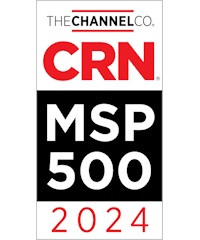There have been some truly horrifying cyber-security headlines popping up over the last month. If you’ve been reading about “fileless” malware attacking banks and other big-name institutions around the world, we’re here to set the record straight: Your business isn’t in direct danger. But even if you’re not, staying abreast of all the details is […]
- General Inquiries: 646-741-1800
- Service: 732-305-2434
Blog
New Mac malware linked to DNC hacking group
Fancy Bear, also known as APT28, is the Russian cybercriminal group responsible for hacking the Democratic National Party last year. Since then, the group has developed a host of tools to exploit Linux, Android, and Windows vulnerabilities. Last month, they spread a new strain of malware that specifically targets Apple Macbooks. If you own a […]
Introducing Cloud Search for G Suite users
Google Cloud Search is the latest tool launched for business customers that allow users to search across their G Suite products including Drive, Gmail, Sites, Calendar, Docs, Contacts and more. It was previously available in a limited preview, named Springboard, and was described as something similar to Google Now for enterprise workers. Google Cloud Search […]
Advice from a failed disaster recovery audit
We can write about disaster recovery planning (DRP) until our fingers bleed, but if we never discuss real-world scenarios it’s all just fumbling in the dark. Examining these successes and failures is the best way to improve your business continuity solutions, and the recent audit of a state government office is rich with valuable takeaways. […]
Vulnerabilities on WordPress websites
“Easy-to-use,” “SEO-friendly,” “open-source,” and “customizable.” These are some of the words that best describe WordPress, currently the most popular Content Management Solutions (CMS) platform. With thousands of websites affected in a recently launched series of attacks, “easy to target,” “hackers’ favorite,” and “prone to attacks” could soon be used to define the experience of running […]
The right social media platforms for SMBs
Social media marketing is tricky, to say the least. It’s difficult to allocate the resources that create the desired effect, especially when so many platforms are available. Facebook might be the biggest name in the industry, but that doesn’t mean it will suit your organization. Instead, business owners should familiarize themselves with all the available […]
Are your printers safe?
This is not a question often asked by anyone who has ever used a printer. Given the increasing sophistication of hackers’ capabilities, the discovery that cyber thievery can, in fact, be performed through some popular printer brands hardly comes as a surprise. One study reveals that at least 20 printer models are vulnerable to Distributed […]
How to get a sneak preview of Instant Apps
At its I/O 2016 conference, Google introduced us to Android Instant Apps. This built-in feature allows users to access a cloud version of an app without having to download it from the Google Play Store. While the technology isn’t yet available to the general public, Google is running a limited test of the technology for […]
3 Virtualization issues to watch out for
Although data storage is only one of the many ways to benefit from virtualized hardware, it’s still the most common use of the technology. Despite this popularity, virtualized storage is susceptible to a number of mismanagement catastrophes. We’ve outlined the three most common mistakes when utilizing this technology, right here. Poorly structured storage from the […]
Do VoIP-enabled offices even need handsets?
“Follow-me” features from VoIP vendors have revolutionized modern business telecommunications. Because internet-based phone solutions allow office workers to answer one phone number from multiple devices, companies can reduce costs and increase efficiency. But for all its certainties, VoIP may have you questioning one thing: Do you even need office phones any more? Question #1: How […]







